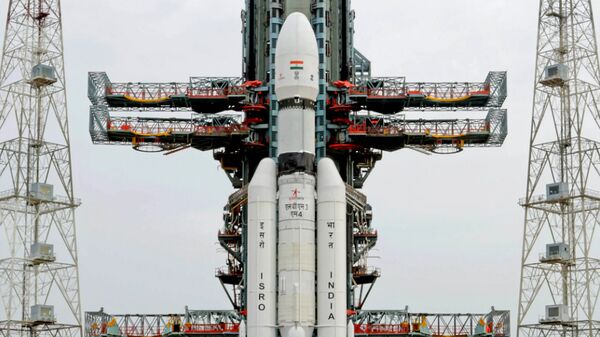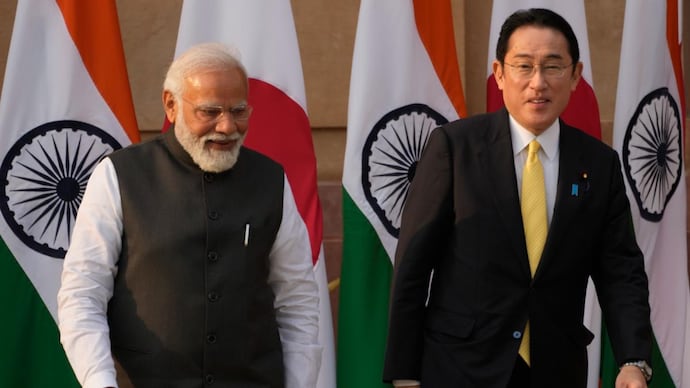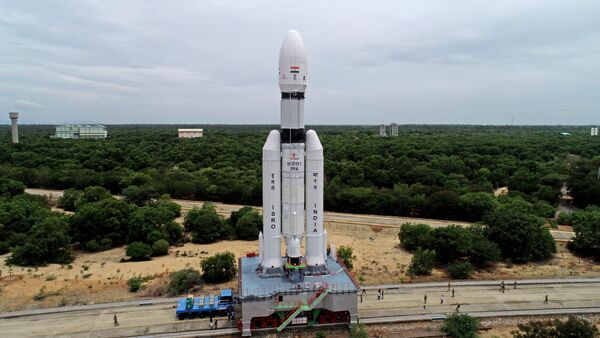The 3,897.89 kilogram Chandrayaan-3 spacecraft was successfully launched into orbit for its 42-day mission to the moon by India’s Bahubali Heavy Lift Rocket-LVM3 today. The LVM3 rocket at the Satish Dhawan Space Centre (SDSC) broke away from the second launch pad at about 2.35 p.m. and started climbing to the heavens with a powerful, deep growl that echoed like a thunder roll.
Now, it will take the satellite over 42 days to reach the moon. India will become the fourth nation to accomplish the feat, following the US, Russia, and China, four years after Chadrayaan-2’s failed effort. While the spacecraft carrying a lander rover from Japan and a rover from the UAE failed in 2022, the missions from Israel and India crashed-landed in 2019. After a number of testing, ISRO engineers upgraded the lander’s design.
When Will Chandrayaan-3 Launch?
On July 14, the Chandrayaan-3 will launch from the Andhra Pradesh space station Sriharikota.
Will Chandrayaan-3 Arrive At The Moon? And When?
3.84 lakh km need to be travelled by Chandrayaan-3 on its alone. On August 23 or 24, the spacecraft’s lander is anticipated to make a gentle touchdown on the moon. The lander module would start its descent for a gentle landing on the south pole area of the moon once it had reached the desired spot.

The choice of the south pole area of the moon was made since it is still considerably larger than the north pole. under regions that are always under shade, there may be a chance that there is water nearby.
The earth and moon would be closer to one another during this time of the year, which is why the launch window was set for the month of July like the Chandrayaan-2 mission (July 22, 2019).
How Much Does Chandrayaan-3 Cost?
The cost to build the Chandrayaan-3 is little about Rs 615 crore, or $75 million.
What does Chandrayaan-3’s rocket launcher look like?
At 2.35 p.m., the ‘Fat Boy’ LVM3-M4 rocket, measuring 43.5 metres high, is slated to launch from the second launch pad.
The largest and heaviest LVM3 rocket (formerly known as GSLV MkIII), affectionately referred to as “fat boy” by ISRO scientists for its heavylift capabilities, has successfully completed six flights in a row.
Three components make up the LVM3 rocket: the propulsion, the lander, and the rover (which is stored inside the lander). The first rocket’s first stage is solid fuel-driven, the second stage is liquid fuel-powered, and the third and final stage is a cryogenic engine fueled by liquid hydrogen and liquid oxygen.
What Will Happen After The Vehicle Lifts Off?
Scientists predict that the Chandrayaan-3 spacecraft will be shot off of the rocket just over 16 minutes into its journey, at a height of around 179 km. The spacecraft would move towards the lunar orbit by orbiting the earth 5–6 times in an elliptical cycle, coming near to the planet at 170 km and furthest at 36,500 km.
After picking up speed, the propulsion module and the lander would travel for more than a month to reach the moon’s orbit, stopping 100 km above the lunar surface.
What Makes Chandrayaan-3 Unique?
The difference between Chandrayaan-3 and its failed predecessor is that SHAPE, which stands for Spectro-polarimetry of HAbitable Planet Earth, is a payload aboard the propulsion module that will be used to examine Earth from lunar orbit.
The Propulsion Module’s primary job is to transport the Lander Module from launch vehicle injection orbit to lander separation in addition to carrying the SHAPE payload.
The lander module’s payloads include RAMBHA-LP, which will measure the near-surface plasma ions and electrons density and its changes, ChaSTE Chandra’s Surface Thermo Physical Experiment, which will measure the thermal characteristics of the lunar surface close to the poles, and ILSA (Instrument for Lunar Seismic Activity), which will measure seismicity in the area of the landing site and map the lunar crust and mantle’s structure.
After soft-landing, the Rover would exit the lander module and examine the lunar surface using its payload, the APXS (Alpha Particle X-Ray Spectrometer), to determine the chemical composition and estimate the composition of the lunar surface’s minerals.
The Laser Induced Breakdown Spectroscope (LIBS) payload aboard the Rover, which has a mission duration of 1 lunar day (14 Earth days), is used to analyse the elemental makeup of rocks and dirt around the lunar landing site.
What Phases Will Chandrayaan-3 Go Through?
The moon mission is broken down into three parts, according to the Indian Space Agency: the Earth Centric Phase (Pre-Launch, Launch and Ascent, and Earth-bound Manoeuvre), the Lunar Transfer Phase (Transfer Trajectory), and the Moon Centric Phase (Lunar Orbit Insertion Phase, Moon-bound Manoeuvre Phase, and Separation of the Lunar and Propulsion Modules, De-boost Phase, Landing Phase, Normal Phase for the Lander and Rover, and Moon Centric Normal Orbit Phase (a 100 km elliptical orbit) for the Propulsion Module.
Chandrayaan was unsuccessful when?
Nearly four years after the Chandrayaan-2, whose lander Vikram and rover Pragyaan partly failed on the Moon’s surface in the early hours of September 7, 2019, the Chandrayaan-3 will be launched.

READ ALSO – Japan Is Eager To Spend 5 Trillion Yen In India


